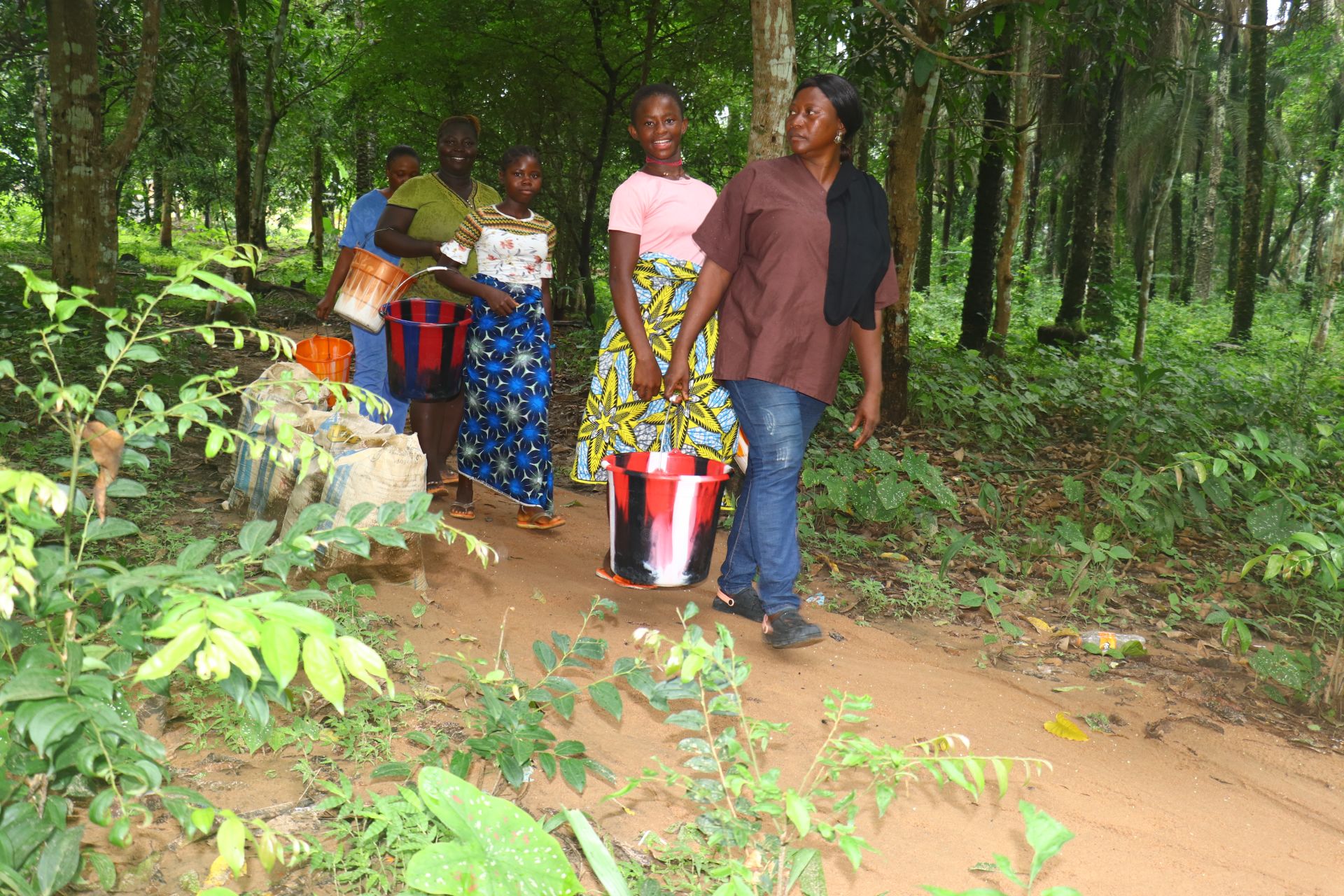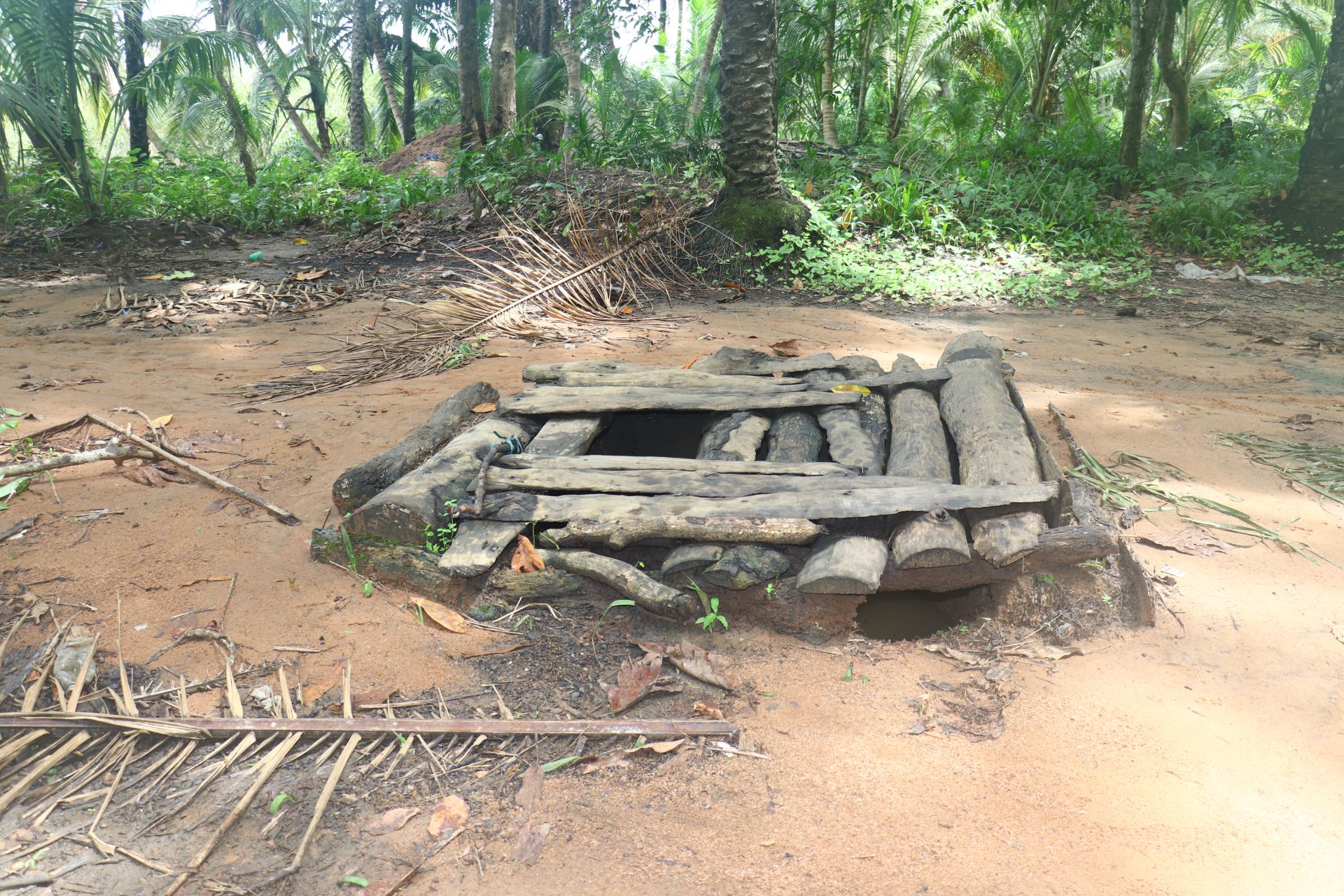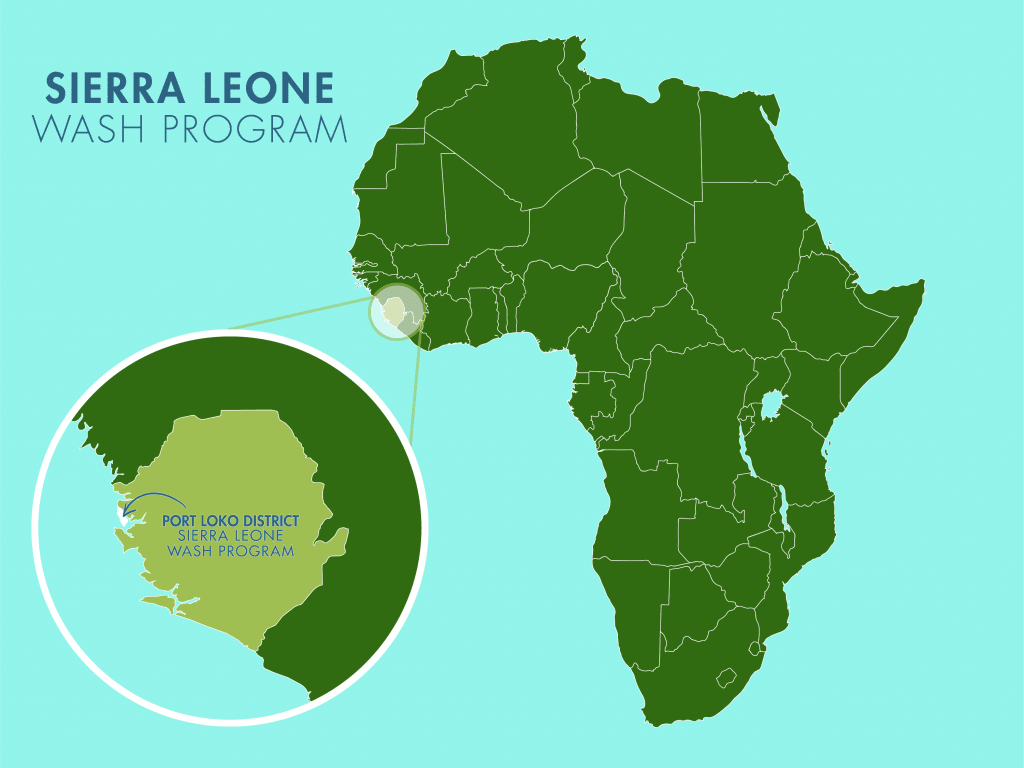Every day, nearly 90 people come to the Malap Community Health Center seeking care. Like many healthcare centers in Western Kenya, it serves as a community anchor for residents in the surrounding area. Not only because of the vital medical services it provides, but also because it was once a place where community members could collect safe water for their daily needs in this rural, under-resourced area.

People walking to collect water.
Sadly, the well that once provided water to sustain the facility and the community has become unreliable, running dry for most of the year as the effects of climate change intensify. Nurses, patients, and community members spend precious hours walking long distances to a contaminated scoop hole—their only remaining source of water. The trips drain everyone's time, energy, and focus that should be devoted to healing and making progress in their daily lives.

The community scoop hole.
"Malap Community Health Post has been facing a water crisis for the past years. The well, [which] was converted to a borehole in 2022, still does not provide enough water for the facility. It gets dry for months, and this leads the healthcare facility staff and community members to fetch water from an unsafe water scoop hole," reported Field Officer Alie Kamara.
Aminata Conteh, a 35-year-old farmer in the community, is responsible for collecting water to meet her family's daily needs. On average, this requires her to make three exhausting trips a day to the scoop hole. Not only does the task leave her weary, but consuming the contaminated water puts her and her family at risk of needing the services of the health center to treat water-related illnesses. Yet, without another option, she must sadly take the risk.

Aminata collects water from the contaminated scoop hole.
"Water is important to me, and without water, life will be very difficult for me. I need safe drinking water, and this will help me to flourish [in] life. I need water in the restroom, and when there is no water at the latrine, I feel uncomfortable using the latrine. I must use water to cook food for the family, [and] also to drink. Without water, [it] sometimes causes me to delay cooking. I will be very happy if we have a water well at this facility because when I visit the facility or get sick, I use water to take oral medication, [and] also to use the restroom," said Ms. Conteh.
Gaining ready access to safe, reliable water at the health center would enable Aminata to collect water for her family that she knows confidently will not harm them and seek treatment when she is ill without concern for further illness.

Staff living quarters.
Water flowing throughout the health center will also enable the medical staff to care for patients effectively and practice proper hygiene and sanitation practices, making the environment safer for everyone.
Steps Toward a Solution
For health care settings, immediate access to a large quantity of clean water is crucial for handwashing, sterilization of equipment, cleaning, and safe childbirth. Water that is off-site creates delays, impacts patient care, and increases the risk of hospital-acquired infections.
Our coverage goals aim for all health centers to have an on-premises water source that will sufficiently serve the patients, healthcare providers, and staff to ensure accessibility, reliability, and safety. With more water available, healthcare workers do not have to ration water, worry about purchasing water with their limited funds, or make tough decisions about when to wash their hands or equipment.
Reliable, clean water ensures that healthcare workers have sufficient water so they can provide excellent patient care!
Our technical experts worked with the health center leadership and the local community to identify the most effective solution to their water crisis. They decided to install a solar-powered submersible pump in a new well, which will distribute water throughout the clinic and to a community kiosk where people can collect safe water.
Access to clean, reliable water will not only provide water essential for daily tasks and drinking, but also enable it to be piped to sinks in treatment rooms throughout the facility and to newly installed latrines. Having access to water in these locations will empower staff members to practice proper hygiene, ensuring safety and reducing the transmission of diseases.
Solar Submersible Pump
This project will be a two-part system powered by solar energy. A solar panel will supply electricity to run a submersible pump in the well. Pipes will be connected to the well, pumping water to a storage tank that will feed water to pipes within the clinic's key service areas. A second water pipeline will supply water to a kiosk where community members can collect clean, safe water.

 Solar Pump
Solar Pump
 Rehabilitation Project
Rehabilitation Project
















